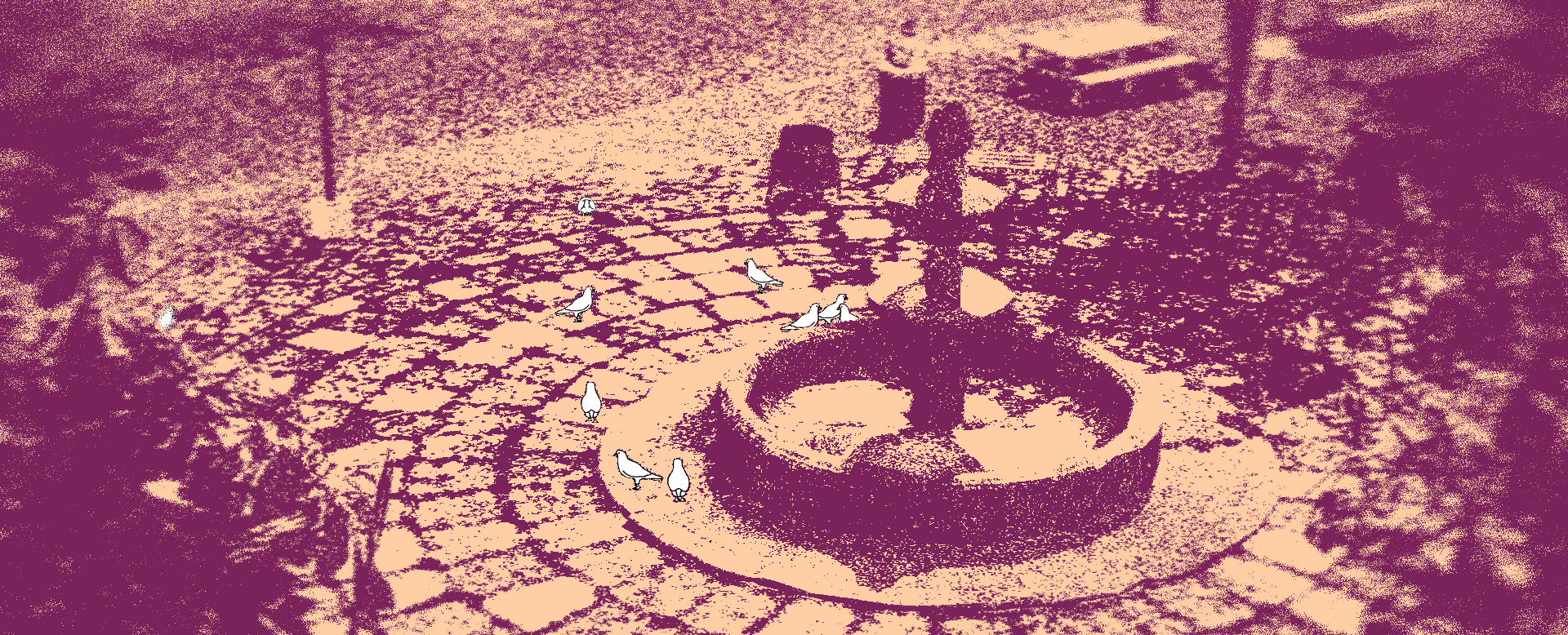
Despelote Review
Despelote celebrates soccer’s profound impact on a nation, community, and on individual lives.
Soccer has a unique magic to it. When you’re for a particular team, you’re instantly part of something bigger than yourself. And yes, that’s sort of the point of all sports fandom. But there’s something special to soccer. Even in spite of corruption (and corruption and some more corruption) at the professional level, when 22 players meet each other on the pitch, it feels like miracles can happen. For 90 minutes, Davids can topple Goliaths and nations that have been undervalued and ignored can make themselves undeniable on the world’s stage. When your team wins, the resulting joy and pride are multiplied thousands of times over, through every fan. When you lose, the heartbreak is shared around. Mathematically, a wonder.
Just as soccer takes individuals (fans and teammates alike) and transforms them into something bigger than their sum, Despelote takes one young boy’s story, and through it tells the story of a whole nation. In 2001, Ecuador’s national team found themselves in a position that many people had deemed unimaginable: they were on the brink of qualifying for the World Cup for the first time ever in history. Despelote, developed by Julián Cordero and Sebastián Valbuena, shows us through the eyes of eight year-old Julián how Ecuador’s unprecedented performance in the qualifying round ignited the city of Quito.
Despelote in Action
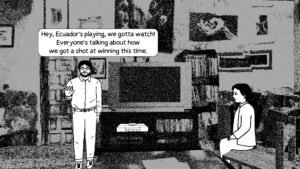
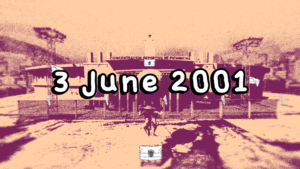
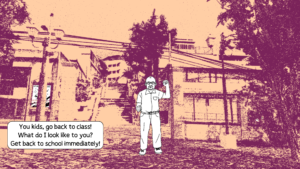
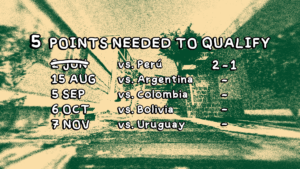
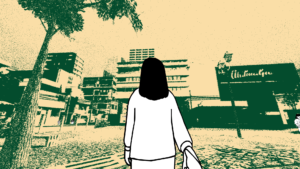
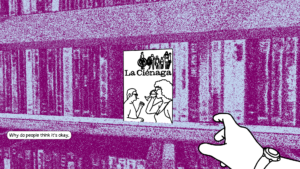
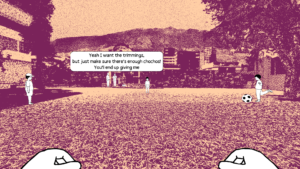
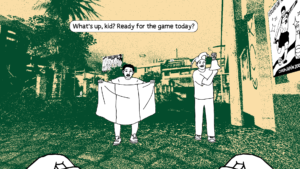

Throughout the game we see life through Julián’s eyes in two moments in time. In 2001, at eight years old, we experience all the fun and foibles of childhood, from sitting through boring class lectures to getting carted around to a family wedding. We also live through moments of his life as a teenager, navigating awkward social settings and facing questions from family about lost motivation for activities he once loved. As we witness the story of a nation, trying to establish itself on the world stage of soccer, we also watch the parallel story of Julián’s adolescence, trying to establish himself in his community.
A self portrait, with creative liberties
If you’re wondering about the potential connection between the name of Julián Cordero, one of the game’s two primary creators, and our protagonist, it is more than coincidence. In a voiced-over narration from Cordero, he reveals that the game is semi-autobiographical, with a few creative liberties taken. He also shares that he is the son of Sebastián Cordero, the filmmaker perhaps best known for directing Ratas, ratones, rateros, one of the most celebrated Ecuadorian films.
This revelation about the developer’s family ties to the Latin American film industry was simultaneously a huge surprise and also put so much of this game into context for me. For one, the game’s multiple references to my favorite Argentinian film, La Ciénaga, suddenly made so much sense. I also gained clarity around the game’s particular focus on authentically representing the quieter, more mundane moments of the people and places of Quito. I found myself mentally transported back in time to my college class on Latin American cinema. The sprinkling of magical realism, the narrator breaking the fourth wall, the moments of meta commentary on the making of the game. Despelote draws from the tradition of Latin American film and makes it its own. I have half a mind to email my former professor and insist that he add this game to his syllabus.
Game design striving for child’s play
Cordero, the designer and developer of the game, clearly integrated gameplay experiences thoughtfully and sparingly. Every gameplay moment contributes to creating viscerally relatable experiences of childhood. The game opens with you playing FIFA on your family’s TV while your parents chatter in the background, only to have your dad switch off your console so they can turn on the “real” game, Ecuador’s national team’s match.
The 2D experience of kicking around the soccer ball is a great introduction to one of the game’s core controls. You’ll be passing and dribbling your fair share of balls while playing Despelote. Between the flick of the analog stick and the airy thunk you hear before the ball soars away, it feels almost as satisfying as the real thing. I felt just like the kids in the game, wishing recess would go on forever so we could endlessly chat and pass the ball around aimlessly.
As we witness the story of a nation, trying to establish itself on the world stage of soccer, we also watch the parallel story of Julián’s adolescence, trying to establish himself in his community.
Some of my favorite moments for the game were when it turns the concept of “time trials” on its head. Rather than giving you a set time in which to do something, adults occasionally give Julián a few hours of in-game time in which you can do anything! Explore the park, meet up and kick around a ball with friends, check the score of the game that’s underway on a storefront’s TV. But don’t forget to have Julián check his watch and be back on time, or he’s in for the lecture of a lifetime.
A view of Quito unlike any other
I am truly astounded that it’s taken me this many paragraphs to get to talking about the art direction and audio design, but that just goes to show how many notable aspects of Despelote there are to highlight. If you’ve seen the trailer, you know that both visuals and audio are hard at work to make this game completely unique and an absolute masterpiece. Sebastián Valbuena lays Quito before us as a halftone dreamland, using real photos of the city as textures for the objects and environments. In contrast, Julián, his friends, city dwellers and any interactable objects exist as black and white illustrations against the highly textured backdrop. Going into the game, I worried about how it would feel to move around in these environments as a hand-drawn boy, and was delighted to find movement was smooth and delightful.
Despelote Trailer
The audio design is by far the most immersive element of the game. The team recorded dialogue and ambient sounds on the ground in Quito, to offer an authentic feel for the city. While the text bubbles are localized to English and a variety of other languages, the voice overs are in Spanish in every version. While I understand that this may make it more challenging for non-Spanish speakers to capture all the details and nuance of the dialogue, I think the devs made the perfect call here. To localize the voice acting would mean to lose so much of the spirit of this community and place that comes through in the game.
I fear I can never say enough good things about Despelote. This game is a triumph. I hope it will go down in the books as one of the most beautiful and impactful games of 2025. It will certainly stay with me for many years to come, as will my newfound love for a city I’ve never visited and a national team I never had the honor to see play.
Emily’s Score: 10/10
Emily was provided with a review key of Despelote by popagenda
About No Small Games
No Small Games is an indie game recap and review podcast brought to you by hosts Kate and Emily! They became friends while streaming on Twitch and bonded over their love of indie video games. In each episode of No Small Games, the two will discuss an indie game they both played independently. They’ll compare their experiences: the good, the bad, their most memorable moments of their playthroughs.
Learn more about the podcast and its hosts on the About page.


